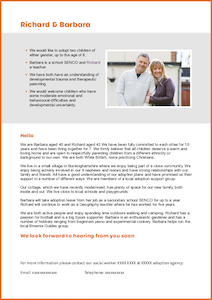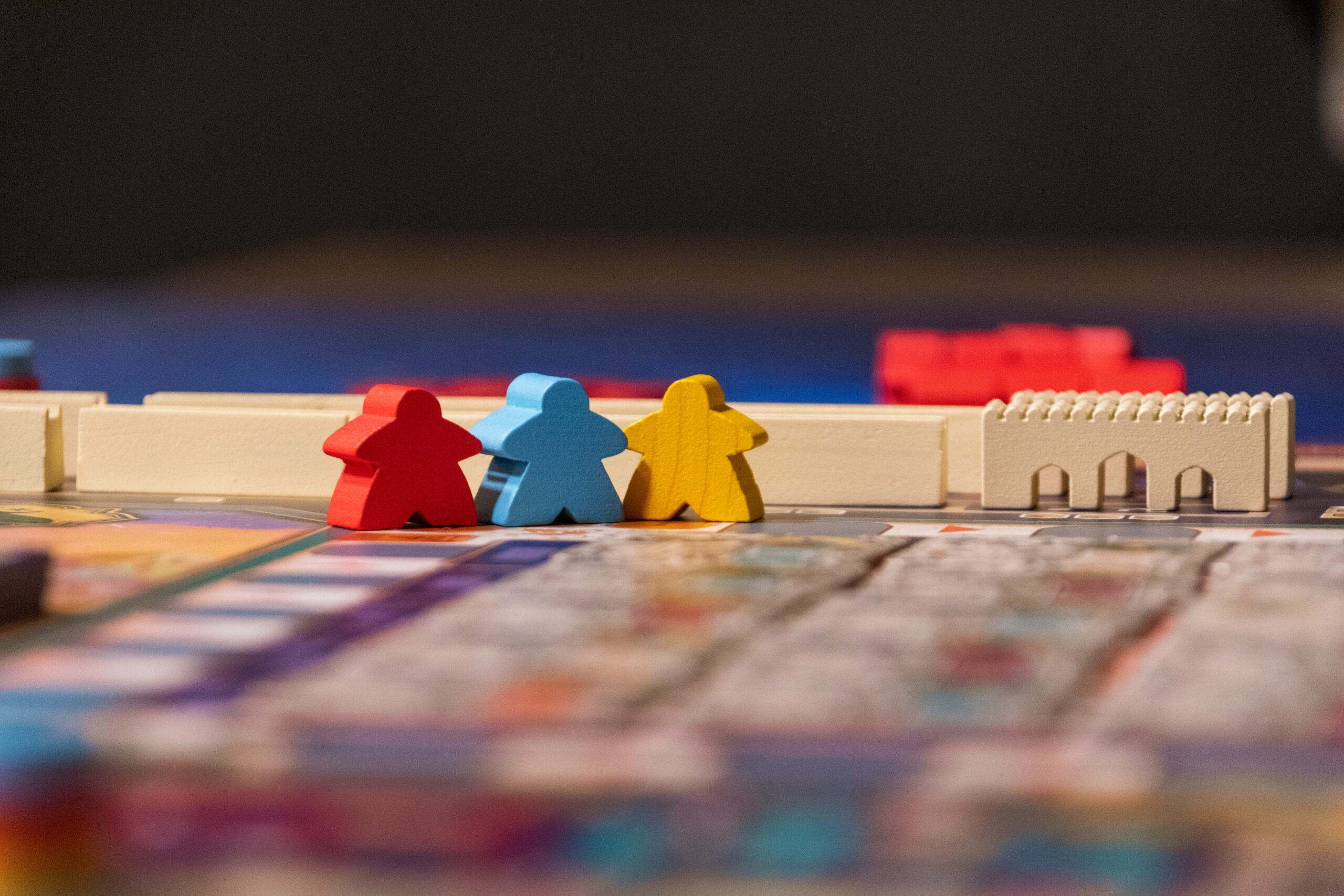Once you have been approved to adopt, your agency will work with you to find a child who could thrive in your family.
The Search begins
Your social worker will work with neighbouring agencies in the first instance and if necessary search nationally to find a suitable child for your family. Profiles of children and adopters are compared to find a suitable match so it is helpful at this point to create a profile of your adoptive family. This is an important document in the matching process, particularly if you decide to attend Activity Days or Exchange Days.
Creating a personal profile

Your social worker may do this with you and it should outline your ages, interests and the age of children you wish to consider. Your profile should give the backgrounds of children you could consider and any special skills or experiences you would bring to adoption. Take a look at our tips to help you create yours.
Finding out about the Children Waiting
You will have discussed with your social worker the backgrounds of children that you hope to care for. Your social worker will have gained an understanding of your particular strengths, together with your experiences with children and the skills that will equip you to manage the challenges ahead. This will be detailed in your Prospective Adopter Report (PAR). Information about your ethnic and religious background will have been discussed and how you would support children from a range of different backgrounds.
Most adoption agencies will welcome adopters for specific groups of children. These include:
- Those over 3 or 4 years of age
- Children in sibling groups
- Children from black and minority ethnic backgrounds
- Children with disabilities and other additional needs
- Adopters who would consider the early placement of children through schemes such as Fostering for Adoption including Concurrent Planning.
Find out more about the children
Other ways of finding a match
The right match isn’t always made via the traditional channels and new initiatives have emerged to supplement the process. Exchange Days and Activity Days give adopters a more active role in the process.
Exchange Days
Exchange Days are events for approved adopters looking for children, and they feature the profiles of children who are waiting for adoptive families nationally. At an Exchange Day you get to meet a number of agencies, and have the opportunity to look at the profiles of the children they have waiting and discuss them in more detail. Importantly you get to talk to them about you and what type of child you are looking for. They have proved to be a very successful method of finding families for children waiting to be adopted.
Be My Family offer adopters the opportunity to attend National Exchange Day events. It is free for adopters to attend these events.
Activity Days
Adoption Activity Days are a way of adopters being more actively involved in finding children. The days are designed to be child-centred, relaxed days where children can have fun.
Adopters can meet children and establish whether or not they feel an emotional connection. The children that normally attend Adoption Activity Days are those children that tend to wait longer for adoptive families.
Deciding on a match
Once you have been matched with a child and you, your social worker and the child’s social worker are happy to proceed with, then it may be possible to meet with the child’s foster parent to find out more. It is unlikely that you will meet the child until after the match is formally approved. However it is now fairly normal that videos of the children in their foster homes will be shown to you during this exploratory phase. You may also meet the Medical Adviser of the child’s agency to help you understand the implications of any known medical information. Once you all agree that a suitable child has been identified your adoption agency, together with the child’s agency will write an Adoption Placement Report for the matching panel. This report will include an Adoption Support Plan which outlines the support that the child’s agency will provide depending on the known needs of the child. The match will then be presented to the adoption panel of the child’s agency.
Going to Matching Panel
The independent adoption panel of the child’s agency will read through all the information in your Prospective Adopter Report and the Child’s Permanence Report together with the Adoption Placement Report. These reports will help the panel to understand more about the child’s needs and how you will hope to meet them. This will enable them to decide if you are the best match for the child. You are generally invited to attend the panel considering the match, perhaps to talk about what drew you to the child. If the panel recommends the match, the child’s adoption agency will make the final decision about whether the match should go ahead.
Initial visits
Once the right child has been found for your family and the child’s adoption agency has given its approval, an Adoption Placement Plan is prepared. This plan sets out a series of managed introductory meetings where you and the child will get to know each other. You may have been asked to prepare a book that introduces you and your home with photographs or a video that the child’s social worker and foster carer can show the child to begin to talk with him or her about the new adoptive family prior to meeting you and ultimately moving in with you.

